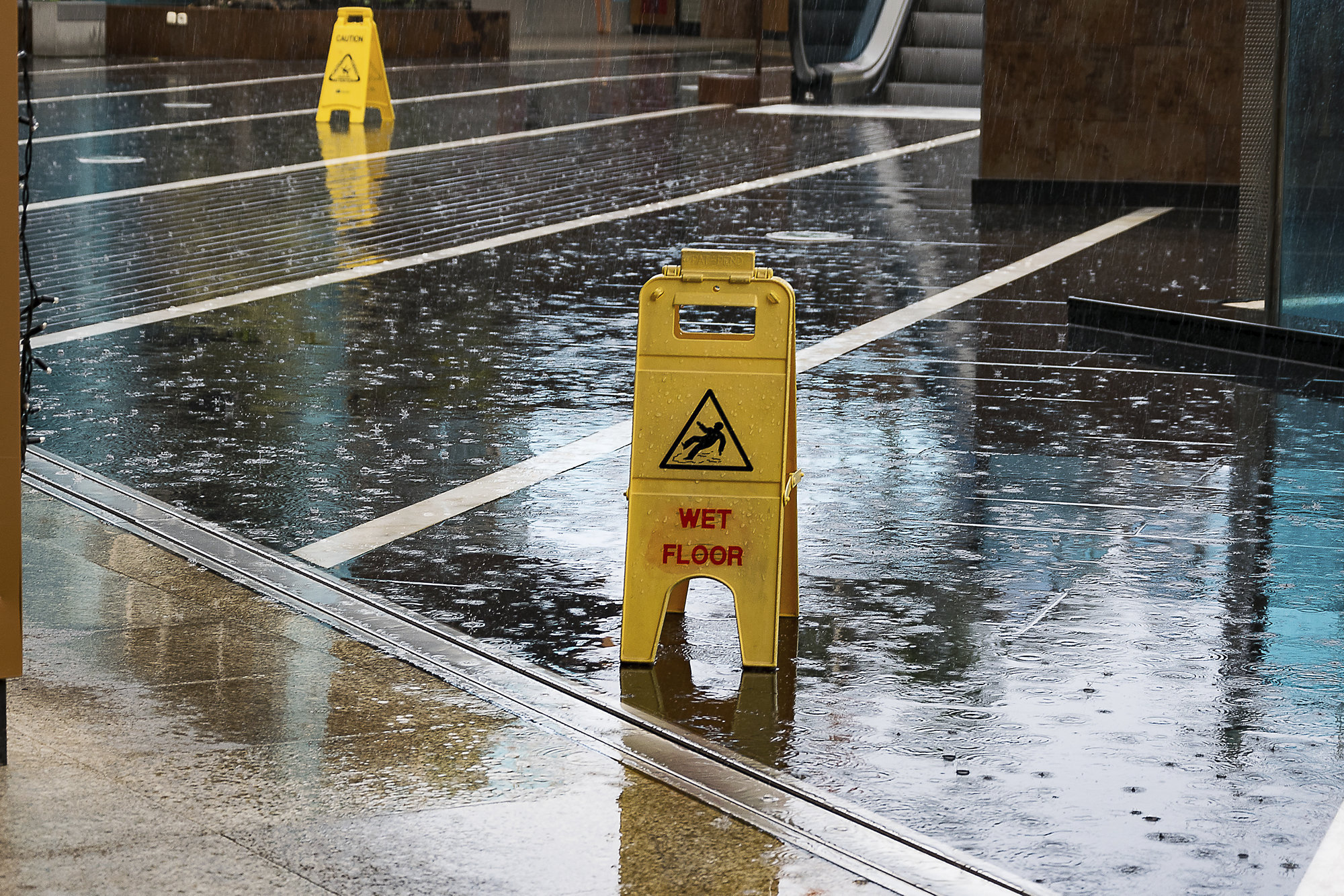
Exacting hygiene standards:
Cleaning floors made easy.
In times of SARS-CoV-2, our hands and door handles should be cleaner than ever. We disinfect, maintain social distancing and intensify cleaning activities. After all, hygiene is the be-all and end-all in preventing the spread of disease.
The floor – usually the largest surface in the room – tends to play a secondary role when it comes to cleaning. This is a mistake. Because the floor comes into contact with outdoor footwear over the course of a working day, and thanks to gravity, almost every particle of dirt sooner or later also ends up on the laminate, carpet or tiles.
This makes the floor a gathering point for germs and dirt, especially in offices, workshops and warehouses where many people come and go and move around every day. When cleaning, under no circumstances neglect the floor. Our tips show you how to do it.
Taking a closer look: ground zero for dirt, germs and microorganisms.
Would you eat from the floor? Probably not. No matter how well maintained a room is, you just can't avoid dirt. But what actually accumulates on the floor over the course of the day?
- Coronaviruses are spread by droplet infection. When a person sneezes or coughs, the virus either lands on another person or sinks to the ground within a two metre radius. The good news: due to the lack of moisture, it cannot proliferate there.
- Do you take your shoes off when you enter the office? Probably not. Soles of shoes that have trodden the pavement are the ideal carrier for uninvited guests. Pathogens such as E. coli bacteria adhere particularly stubbornly to rubber treads, and are distributed over the office floor when walking. From there, the bacteria spread to people, for example, when they adhere to bags that have been set down, thereby causing infections.
- The office is a busy place for at least eight hours a day. Hair is tussled, heated discussions occur, and sometimes a sandwich gets eaten. That's why there are everyday residue and non-infectious microorganisms on the floor: e.g. stones, crumbs or hair.
- Along with people, the equipment we use at work also contributes to pollution. Manufacturing machines produce large to minute particles in operation and due to wear. Computers and printer stations produce the meanwhile notorious fine dust, which can then be found both in the air and on the ground.
A cleaning roster for hygienic and clean floors.
Hygiene measures only function if they are implemented correctly. This is especially true if you are not only aiming for a visually spectacular result, but also want to break chains of infection. No two floor coverings are the same. Rather, each type of floor requires special cleaning and care.
- Keep yourself safe: when doing any wet cleaning work, wear gloves that prevent your hands from coming into contact with the cleaning agent. These gloves should be, and remain, dry on the inside.
- Use the vacuum cleaner correctly: when vacuuming up potentially harmful substances such as chemicals, wood dust or solvents, be sure to choose a suitable industrial vacuum cleaner and follow the instructions for use.
- Use high pressure cleaners correctly: set the mechanical, thermal and chemical parameters correctly to ensure high pressure cleaning is done correctly.
Carpet: how to clean it properly
Fabric floor coverings do require some care when cleaning, but they score points with good dust binding properties and acoustic benefits.
- Use a dry vacuum cleaner for daily vacuuming of carpeted floors, making sure to use the brushless setting for high pile floors
- Before intensive cleaning, comb medium-high to high piles in the direction of the nap, and pre-treat any stains
- Carpets can be thoroughly cleaned by using special carpet shampoos, either as dry powder or as a foamed mixture with water
- When wet cleaning, the foam is sprayed on first, and then worked in with a brush. After drying completely, the vacuum cleaner is used again
Extra tip: a vacuum washing unit removes unsightly stains without requiring much effort, and leaves little residual moisture. Ideal for office floors that will be used again straight afterwards.
Laminate: how to clean it properly
It looks like wood, but is cheaper and easier to clean: no wonder laminate is so popular in offices. The only drawback: you can't sand it back.
- Vacuum cleaning delivers the best results as a first step
- Laminate should be mopped daily with a little water and mild cleaning agents. Leaving it to dry is recommended. Make sure that no pools of water form
- Get rid of small scratches using oil and scuffing with an eraser
- Never use scouring agents, floor polish or polish, as these leave unsightly stains on laminate
Please note: laminate only needs a little cleaning agent, too much leaves an unsightly smear on the surface.
Cleaning parquetry: how it's done
Real wood underfoot makes rooms cosy. However, office chairs can leave grooves in this soft floor covering. That's why you should protect your parquetry with a floor protection mat.
- Clean parquetry daily to remove sand and small stones before they leave marks
- When cleaning and caring for wood floors, a distinction must be made between oiled and natural wood floors. Only ever clean oiled floors using special cleaner
- Ideally, wipe parquetry dry or damp using a cotton mop that has been wrung out
- Any pools of water will damage the parquetry and should be avoided
- Regular polishing maintains an attractive shine and seals the wood
Please note: vacuum cleaners and microfibre cloths tend to be unsuitable for parquetry floors – the risk of scratching is high!
Cleaning tiles: there's a few things to consider
Floor tiles lend rooms an elegant appearance. When it comes to daily cleaning, they couldn't be easier to look after.
- Start by removing dust and lint using a vacuum cleaner or dry wiper
- Then use a neutral cleaning agent and mop for wet cleaning; tiles are fully compatible with water
- If the grouting has stained, you should use a special grout cleaner
- You can use a high-pressure cleaner for for tiles that are very dirty
Please avoid the following: do not use cleaning products with polishing additives. These leave a sticky and sometimes slippery layer on the tiles.
PVC floors: how to clean them correctly
Looking for a robust floor covering? Then PVC is the right choice for you. The correct cleaning technique will help to preserve its shine.
- PVC can be vacuumed and mopped without concern. Good results are obtained with water and vinegar in a one-to-one ratio
- To prevent the floor from becoming dull, always rinse it with clean water
- Dry the floor with a soft cloth once finished
- You can remove small marks with special sprays or dirt erasers
Please note: the soft surface of PVC will be damaged by aggressive or abrasive cleaning agents.
Regular and professional cleaning of floors extends their service life, protects employees from health risks and boosts well-being. You can find lots of products suitable for this in our hygiene shop.
Contact us!
We are available to answer any other questions, free of charge.


